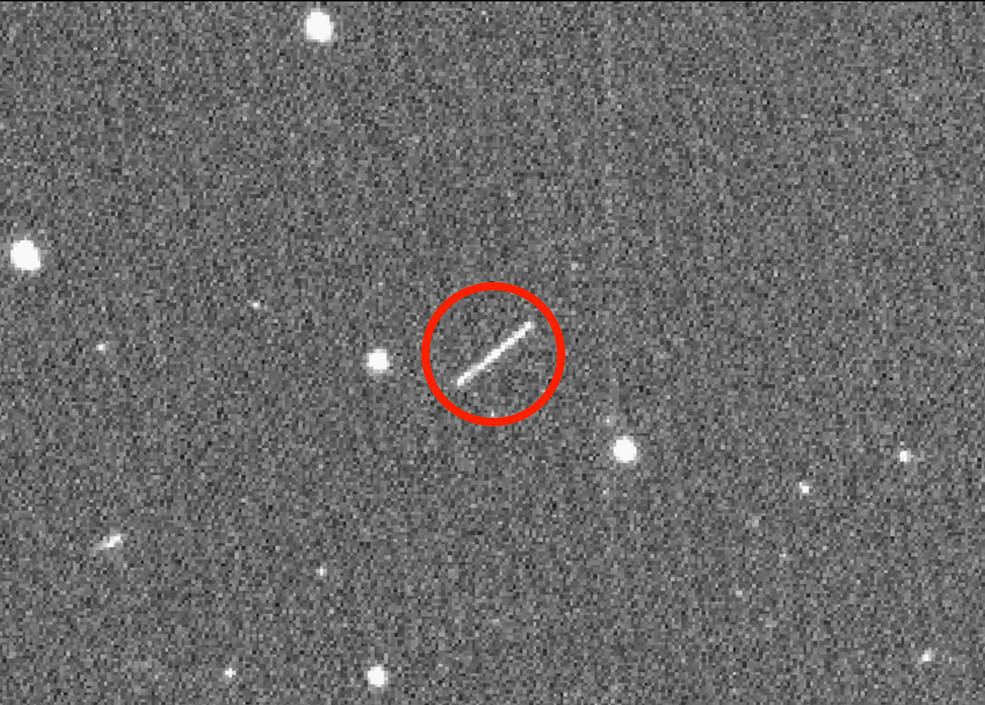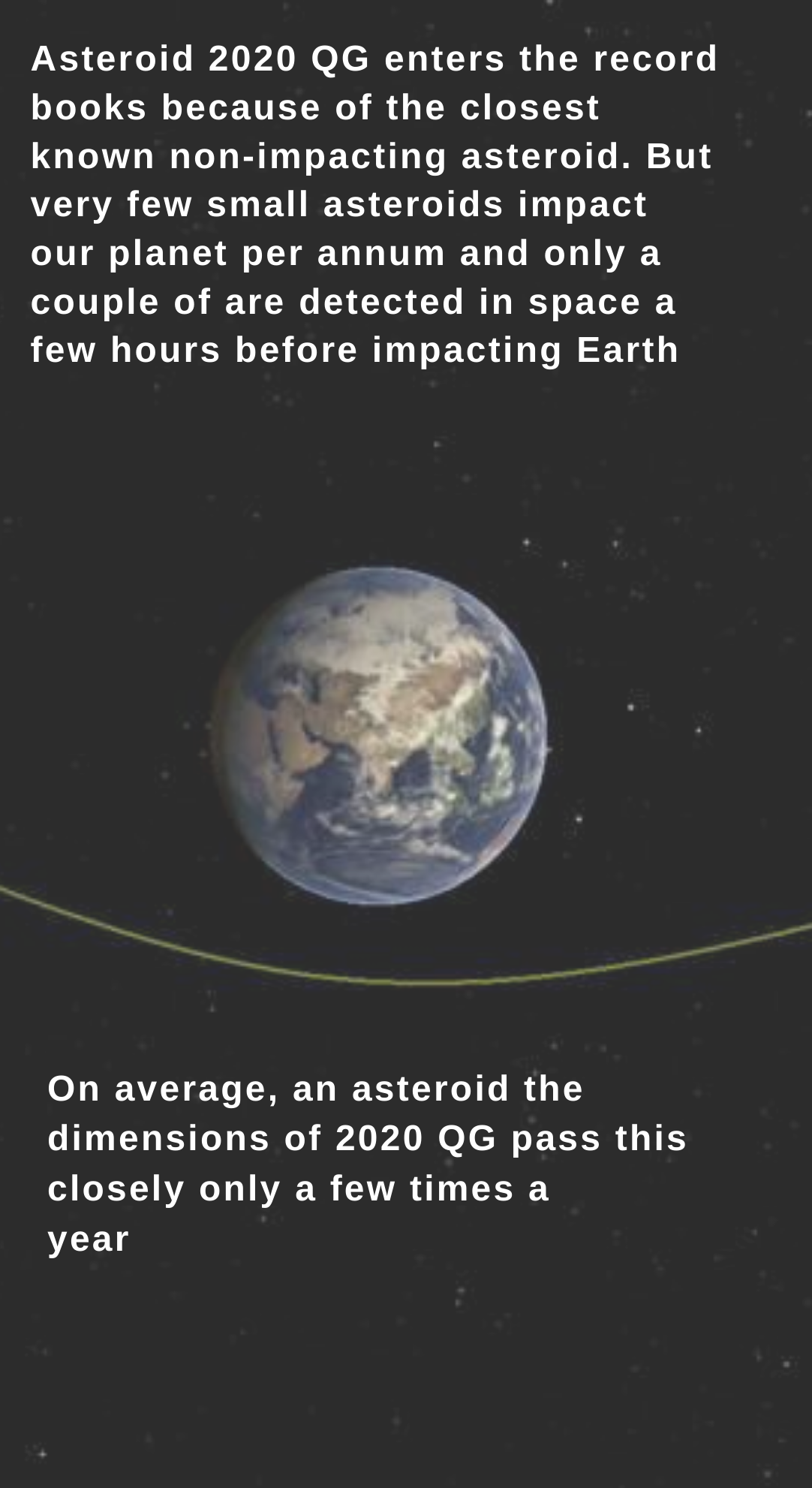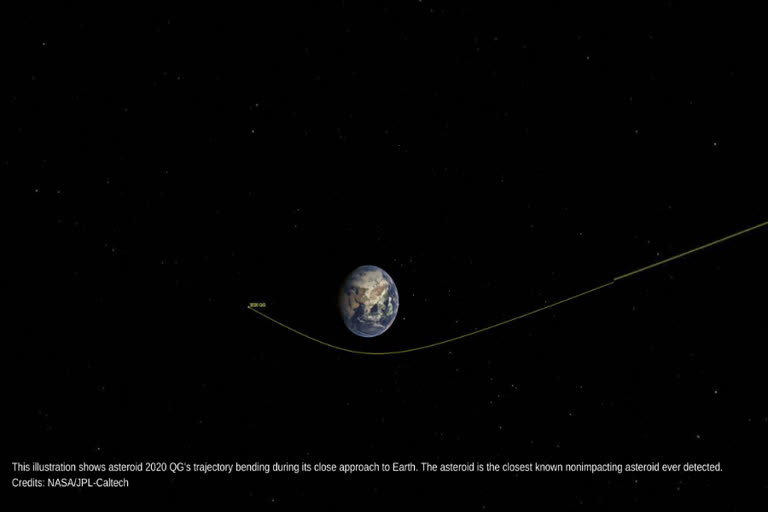Washington: SUV-size asteroid set the record for coming closer to the Earth than any other known Near-Earth Asteroids (NEA). It passed 2,950 kilometers above the southern Indian Ocean.
Asteroid 2020 QG is very small by the asteroid standards. If it had been on an impact trajectory, then it would likely have become a fireball and also broke up in the Earth's atmosphere.
By some estimates, there are hundreds of millions of small asteroids, the size of 2020 QG, but they are extremely hard to discover until they get very close to Earth. The vast majority of NEAs pass by safely at much greater distances which are usually much farther away than the Moon.

Paul Chodas, director of the Center for Near-Earth Object Studies (CNEOS) at NASA's Jet Propulsion Laboratory in Southern California said, "It's cool to see a small asteroid come by this close because we will see the Earth's gravity dramatically bend its trajectory. Our calculations show that this asteroid got turned by 45 degrees approximately because it swung by our planet."
Zipping along at almost 8 miles per second which is a little slower than average, Chodas noted that the 2020 QG was first recorded as just a long streak in a wide-field camera image taken by the Zwicky Transient Facility.
The image was taken six hours after the closest point of approach as the asteroid was heading away from the Earth. A sky-scanning survey telescope funded by the National Science Foundation and NASA, the Zwicky Transient Facility is based at Caltech's Palomar Observatory in San Diego County. NASA's Near-Earth Object Observations Program funds data processing for NEO detections.

In 2005, Congress assigned NASA the goal of finding 90 percent of the near-Earth asteroids that are about 460 feet or larger. These larger asteroids pose a much greater threat if they were to impact, and they can be detected much farther away from Earth because their rate of motion across the sky is typically much smaller at that distance.
"It's quite an accomplishment to find these tiny close-in asteroids in the first place because they pass by so fast," Chodas said.
He further added that "There's typically only a brief window of a few of days before or after close approach when this small of an asteroid is close enough to Earth to be bright enough but not so close that it moves too fast within the sky to be detected by a telescope."
Also Read: First anniversary of Chandrayaan-2 launch



